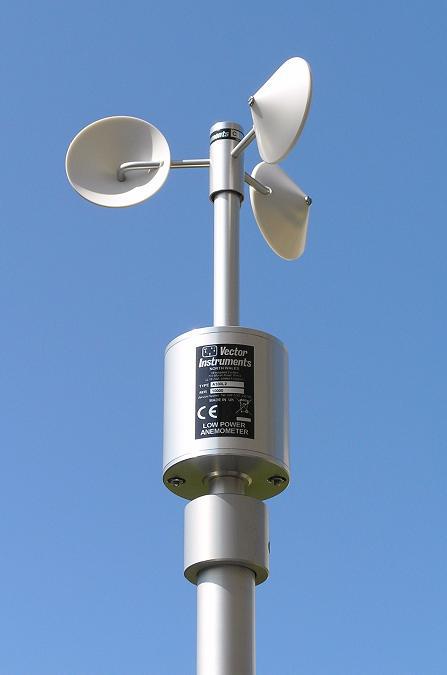Anemometer Innovations: The Latest Innovation for Wind Speed Dimension
Anemometer Innovations: The Latest Innovation for Wind Speed Dimension
Blog Article
Anemometers Unveiled: Comprehending Their Relevance in Ecological Monitoring and Security Procedures
The function of anemometers in environmental monitoring and safety and security measures is usually undervalued, yet their relevance is indisputable. From weather forecasting to aviation safety and security, anemometers play a critical role in offering precise information that notifies decision-making procedures and enhances overall safety and security.
Background of Anemometers
The evolution of anemometers can be mapped back to the ancient people where basic wind gauging tools were initial made use of. One of the earliest recognized anemometers was the hemispherical cup anemometer developed by Leon Battista Alberti in the 15th century.
Over the years, advancements in technology led to the growth of more modern-day anemometers, including ultrasonic anemometers and laser Doppler anemometers, providing boosted precision and efficiency in measuring wind rate and instructions. The background of anemometers showcases an exceptional journey of innovation and progression in the area of meteorology.
Sorts Of Anemometers
Throughout the field of weather forecasting, numerous kinds of anemometers have been created to precisely gauge wind rate and instructions. The most usual type is the cup anemometer, which contains 3 or four cups mounted on horizontal arms that revolve with the wind. As the mugs rotate, the rate at which they turn is directly proportional to the wind speed. One more extensively utilized type is the vane anemometer, which includes a tail or fin that straightens itself with the wind direction. This alignment permits the tool to figure out the wind direction. Sonic anemometers make use of ultrasonic signals to gauge wind speed and instructions properly. They are generally used in research applications because of their high accuracy. Hot-wire anemometers run based on the principle that the cooling impact of wind on a warmed wire is symmetrical to the wind rate. These anemometers appropriate for gauging reduced wind speeds with high precision. Each sort of anemometer has its toughness and is picked based upon the certain demands of the tracking task available.
Applications in Meteorology
Having actually talked about the numerous kinds of anemometers used in meteorology for measuring wind rate and direction, it is vital to explore their practical applications in the area. Anemometers play a vital function in meteorology by supplying accurate and real-time information on wind problems (anemometer). Meteorologists make use of anemometers to keep an eye on wind speed and direction to forecast weather condition patterns, concern cautions for severe weather condition events like hurricanes, twisters, and storms, and evaluate weather for air travel safety and security
In meteorology, anemometers assist in comprehending local and local wind patterns, which are vital for anticipating weather modifications and establishing climatic fads. These tools are likewise made use of in research to study microclimates, metropolitan heat islands, and air contamination dispersion. Additionally, anemometers are utilized in farming to optimize plant administration methods, such as look here watering and chemical application, based upon wind conditions.
Value in Air Travel Security
An integral aspect of ensuring aeronautics safety hinges on the careful tracking of wind problems using anemometers. Anemometers play a critical duty in aviation by giving real-time data on wind rate and instructions, assisting pilots in making educated decisions throughout touchdown, liftoff, and trip. Unforeseeable and strong winds can significantly affect aircraft operations, making it necessary for aviation authorities to count on accurate wind measurements to make sure the security of travelers and staff.

In the vibrant atmosphere of aviation, where even small changes in wind speed and instructions can have extensive effects, anemometers stand as indispensable devices for advertising risk-free and secure flight.
Duty in Environmental Research
Exactly how do anemometers add to innovations in environmental research study? Anemometers play a vital role in ecological research study by providing necessary data on wind rate and direction. This information is important for understanding various climatic procedures, such as air pollution dispersion, weather condition patterns, and climate change. By accurately determining wind attributes, anemometers aid researchers examine the movement of contaminants airborne, evaluate the effect of commercial exhausts, and anticipate the spread of impurities in the setting.


Verdict
In conclusion, anemometers have played a vital duty in ecological surveillance and safety actions. Comprehending the importance of anemometers is important for accurately determining wind speed and instructions, which is crucial for forecasting weather patterns, making certain safe aviation procedures, and performing environmental studies.
One of the earliest known anemometers was the hemispherical mug anemometer designed by Leon Battista Alberti in the 15th century. Over the years, developments in innovation led to the development of even more modern-day anemometers, including ultrasonic anemometers and laser Doppler anemometers, supplying enhanced accuracy and efficiency in gauging wind speed and instructions. Hot-wire anemometers run based on the principle that the cooling effect of wind on a warmed cord is symmetrical to the wind rate. Meteorologists use anemometers to keep an eye on wind rate and instructions to anticipate climate patterns, issue cautions for severe weather condition events like typhoons, tornados, and tornadoes, and evaluate climatic conditions for aeronautics security.
Understanding the significance of anemometers is essential for properly measuring wind speed and direction, which is crucial for anticipating weather condition patterns, guaranteeing risk-free aeronautics operations, and conducting environmental studies. (anemometer)
Report this page